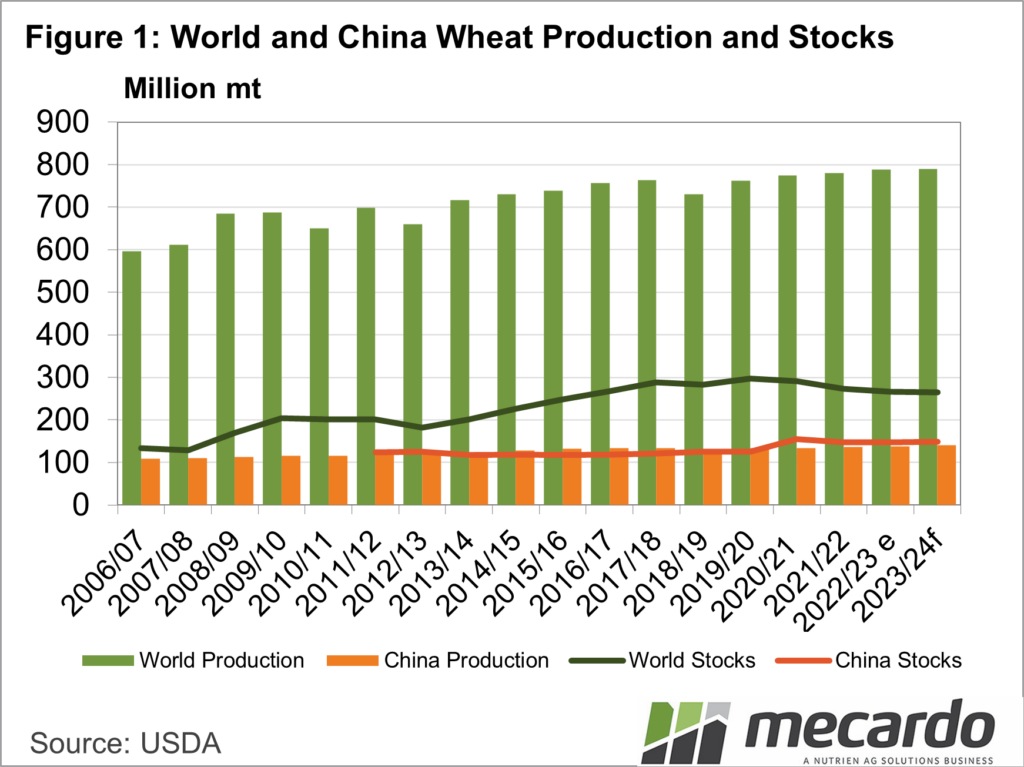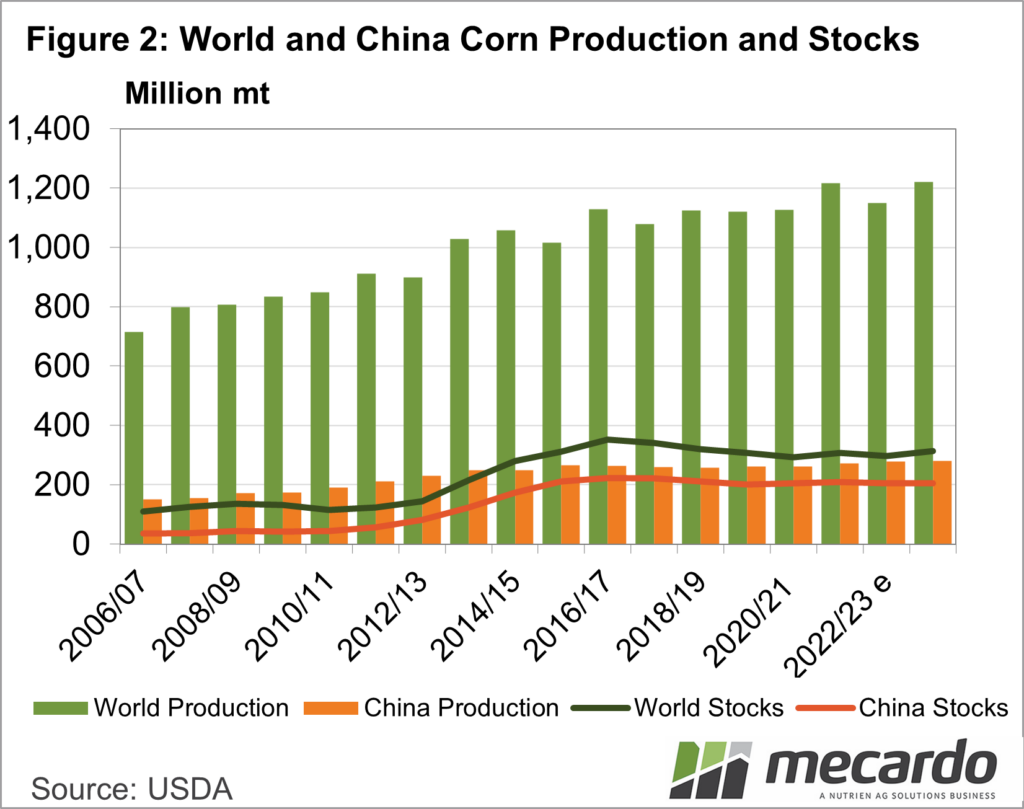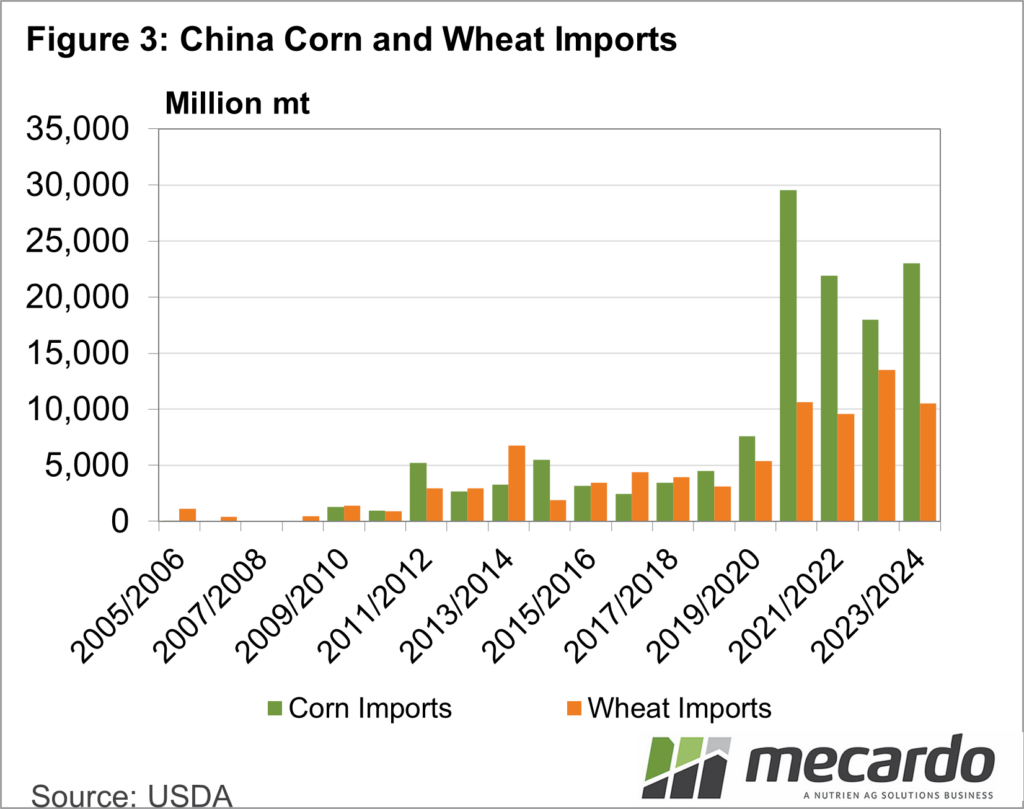Last Friday’s market comment made some interesting points on Chinese wheat production problems, and how they could impact world markets. Given these issues, it’s worth taking a look at China’s place in the world grain trade.
You don’t get to be a country of two billion people without having some serious food production capacity. While the data provided by China around can be notoriously rubbery, they do paint some picture of why heavy rainfall in a remote Chinese province has market pundits watching.
China is a heavyweight in world wheat production. We can see in Figure 1 that according to the United States Department of Agriculture (USDA), Chinese wheat production has averaged 132mmt over the last 10 years. Chinese wheat production is 17% of world production, and the largest by a single country. Figure 1 also shows that China holds more wheat stocks than anywhere else. Chinese wheat stocks account has averaged 44% of world stocks over the last 10 years, and last year they held 52% of world stocks. A prudent observer will notice that China likes to hold roughly equivalent to a year’s local production in stocks. A huge amount of silo space if nothing else.
The story is a similar one with corn. On the production front, China grows 23% of the world’s corn, a huge 280mmt crop is expected in 2023-24. In stocks, China holds less than a year’s production, but well over half the world’s stocks (see Figure 2). On average China has held 66% of world corn stocks over the last 10 years.
With massive production and stocks to maintain, let alone a population to feed without prices getting too high, China has to run a big import program when the climate is unfavourable for production. Figure 3 shows the huge growth in Chinese wheat and corn imports over the last 10 years. Last year’s combined wheat and corn imports were roughly equivalent to Australia’s record wheat crop.
What does it mean?
It is always hard to know if things are going awry with Chinese production, and the only really solid indicator is an increase in imports to replace grain not produced locally. As such the market is taking notice of Chinese weather at the moment. Some estimates are of 10-20mmt of wheat being wiped out. It would take a massive export program and aggressive buying to replace it, and this would bring some serious price upside.
Have any questions or comments?
Key Points
- Wheat markets are talking about production issues in parts of China.
- China holds around half of the world’s wheat stocks, but like to maintain this level.
- Replacing large losses would give strong support to world wheat markets.
Click on figure to expand
Click on figure to expand
Click on figure to expand
Data sources: USDA, Mecardo















